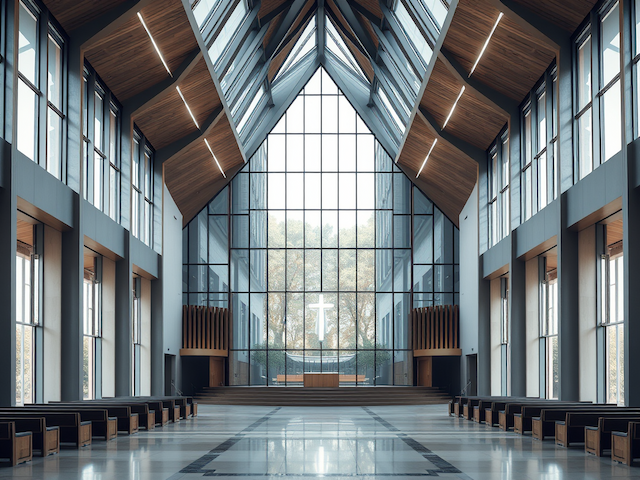God’s purpose for the church
God’s purpose for the church
Posted on July 20, 2012 Updated on July 19, 2012
How is the church to be described, indeed to be identified?
In the popular mind the church is usually thought of as the building on such and such a street, or in such and such a town.
The First Presbyterian Church is that red brick building on the corner of Park and Main. “Is there a church nearby?” someone asks, and invariably the answer is in terms of a building labeled Methodist or Baptist or Catholic, and so on.
Let it be underscored, however, that until later than the first century there was not a single church building. The church was not a building: it was rather the ecclesia, the assembly, of those who had believed in Jesus Christ, had been baptized in His name, and had received the Holy Spirit. They went to the Jewish temple for prayer, they met in peoples homes for worship and breaking bread, and they shared their earthly possessions. Many signs and wonders were done in Jesus name. They were a company united in praise, study, fellowship, and service.
Thus when Acts says “great fear came upon the whole church,” the reference is to the believing, baptized, Spirit-receiving company of people.
They were those who had called on the Lord and were “being saved” (Acts 2:47). They were people who had received new life, and in the excitement and wonder of it were witnessing to everyone of what Christ had done for them and how He could do it for all who would likewise believe in His name.
One more remark about the church and a building. Nothing said has been intended to disparage church buildings. If nothing else, a building is a necessity for shelter in Christian worship and fellowship.
The early Christians for all their lack of distinct buildings did meet in the temple and homes; they were not without the use of buildings. But the point here is that, building or no, the church is still wherever there is a coming together of Christians.
In speaking of the nature of the church let us return to the point that the church is the fellowship of people who believe in Jesus Christ. This means that the church stands constantly in a living relationship to Christ. How is the church to be recognized or identified? It is by observing a fellowship of people whose total lives, their worship and their work, are sustained by the living Christ.
The Apostle Paul uses three vivid images of the connection between Christ and the church in Ephesians. First he speaks of Christ as “the head over all things for the church, which is his body, the fullness of him who fills all in all” (1:22-23). The churchs Headits Leader, Guide, and Mindis none other than the exalted and risen Christ.
The church is the extension of the incarnation, the embodiment in time of Christs eternal purposes. The church exists to carry on the work He began on earth and now directs through His Spirit. Neither pope, priest, nor preacher can be the head of the church. There is but one: He who said, “I will build my church.” The church, the ecclesia, must exist for nothing else but to carry out the living Christs willto be for Him His hands, His feet.
A second figure Paul uses is that of the church as “the household of God”the church as a growing spiritual building with Christ as the chief cornerstone, and all people being built into it. “So then you are no longer strangers and sojourners, but you are fellow citizens with the saints and members of the household of God, built upon the foundation of the apostles and prophets, Christ Jesus himself being the chief cornerstone, in whom the whole structure is joined together and grows into a holy temple in the Lord” (2:19-21).
The church by nature is the only place where all mankind can dwell together in harmony. This is where Jew and Gentile, black and white, rich and poor find themselves one; for, whatever outwardly may separate, in the church all are built and joined together with Christ as cornerstone. There can be no longer any strangers or sojournersall are at home with Christ.
The third picture is that of the church as the bride of Christ. In Ephesians 5, against the background of Pauls injunction to husbands to love their wives, he adds, “as Christ loved the church and gave himself up for her, that he might sanctify her, having cleansed her by the washing of water with the word, that the church might be presented before him in splendor, without spot or wrinkle or any such thing, that she might be holy and without blemish” (verses 25-27). Christ loves the church beyond any husband for his bride, for not only did He give Himself up for her, but also He ever seeks to purify her, make her holy.
Hence lovethe love of Christ for us and our love for Himis the tie that binds. The church is the place where love should reign supreme, where love is to be the motive for every action. As the church day by day fellowships with Christ, she grows in strength until the consummation when she will sit down at the marriage supper of the Lamb.
To review: Christ the head of the church, the church His body; Christ the cornerstone of the church, the church His building; Christ the husband of the church, the church His bride. The true church then is the church that is bound together with Jesus Christ: the body to carry out His work, the building to house all people in unity, the bride to do all things in love.
How is the church to be identified or described? The answer again: it is a fellowship of baptized, believing, Spirit-renewed people for whom Christ is in all such ways the living Lord.
Subscribe FB Podcasts Books Twitter Donate
Black Berry Pin: 286431e3





